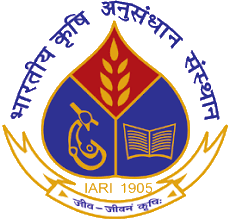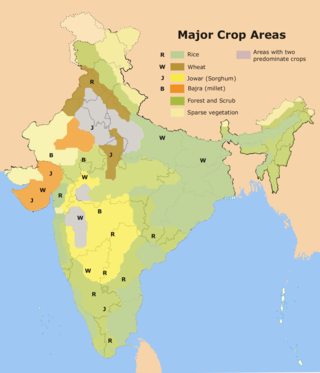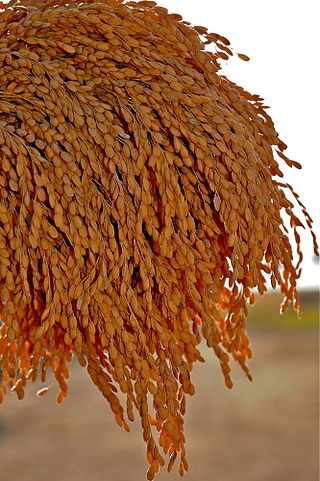
Rice is a cereal grain and in its domesticated form is the staple food of over half of the world's population, particularly in Asia and Africa. Rice is the seed of the grass species Oryza sativa —or, much less commonly, Oryza glaberrima. Asian rice was domesticated in China some 13,500 to 8,200 years ago; African rice was domesticated in Africa about 3,000 years ago. Rice has become commonplace in many cultures worldwide; in 2021, 787 million tons were produced, placing it fourth after sugarcane, maize, and wheat. Only some 8% of rice is traded internationally. China, India, and Indonesia are the largest consumers of rice. A substantial amount of the rice produced in developing nations is lost after harvest through factors such as poor transport and storage. Rice yields can be reduced by pests including insects, rodents, and birds, as well as by weeds, and by diseases such as rice blast. Traditional rice polycultures such as rice-duck farming, and modern integrated pest management seek to control damage from pests in a sustainable way.

The Indian Agricultural Research Institute (IARI), commonly known as the Pusa Institute, is India's national institute for agricultural research, education and extension. The name Pusa Institute is derived from the fact that the institute was originally located in Pusa, Bihar as the Imperial Institute of Agricultural Research in 1911. It was then renamed as the Imperial Agricultural Research Institute in 1919 and following a major earthquake in Pusa in 1934, it was relocated to Delhi in 1936. The current institute in Delhi is financed and administered by the Indian Council of Agricultural Research (ICAR). The IARI was responsible for the research leading to the "Green Revolution in India" of the 1970s. IARI ranked First among Agriculture and Allied Universities in the National Institutional Ranking Framework NIRF.

Basmati is a variety of long, slender-grained aromatic rice which is traditionally grown in the Indian subcontinent, mainly India, and Pakistan, as well as some regions of Sri Lanka and Nepal. As of 2019, India accounted for 65% of the international trade in basmati rice, while Pakistan accounted for the remaining 35%. Many countries use domestically grown basmati rice crops; however, basmati is geographically exclusive to certain districts of India and Pakistan.

Patna rice, a variety of the species Oryza sativa, and one of the varieties of long-grain white rice, is extensively cultivated in the Indo-Gangetic plains, in and around Patna, capital of Bihar state, India. Patna rice is known for its elongated kernel with grain length greater than 6 mm, and has been used as staple food by the local people for thousands of years. Sometimes, Patna rice is also called Parimal rice locally.

Wehani rice, also known as California Red Jasmine Rice, is a variety of aromatic brown rice developed in the late 20th century by Lundberg Family Farms of Richvale, California. The name of the rice originates from the brothers of the family, Wendell, Eldon, Homer, Albert, and Harlan Lundberg.
Ambemohar is a fragrant rice variant grown in the foothills of the Western ghats region of the state of Maharashtra in India.

Rice production in India is an important part of the national economy.

Pakistan holds a significant position in the global rice market and is one of the leading rice-producing countries. The rice sector is crucial for the country's economy, providing livelihoods to a substantial portion of the population and contributing substantially to agricultural exports.
Mutation breeding, sometimes referred to as "variation breeding", is the process of exposing seeds to chemicals, radiation, or enzymes in order to generate mutants with desirable traits to be bred with other cultivars. Plants created using mutagenesis are sometimes called mutagenic plants or mutagenic seeds.

Farming systems in India are strategically utilized, according to the locations where they are most suitable. The farming systems that significantly contribute to the agriculture of India are subsistence farming, organic farming, industrial farming. Regions throughout India differ in types of farming they use; some are based on horticulture, ley farming, agroforestry, and many more. Due to India's geographical location, certain parts experience different climates, thus affecting each region's agricultural productivity differently. India is very dependent on its monsoon cycle for large crop yields. India's agriculture has an extensive background which goes back to at least 9 thousand years. In India, in the alluvial plains of the Indus River in Pakistan, the old cities of Mohenjo-Daro and Harappa experienced an apparent establishment of an organized farming urban culture. That society, known as the Harappan or Indus civilization, flourished until shortly after 4000 BP; it was much more comprehensive than those of Egypt or Babylonia and appeared earlier than analogous societies in northern China. Currently, the country holds the second position in agricultural production in the world. In 2007, agriculture and other industries made up more than 16% of India's GDP. Despite the steady decline in agriculture's contribution to the country's GDP, agriculture is the biggest industry in the country and plays a key role in the socio-economic growth of the country. India is the second-largest producer of wheat, rice, cotton, sugarcane, silk, groundnuts, and dozens more. It is also the second biggest harvester of vegetables and fruit, representing 8.6% and 10.9% of overall production, respectively. The major fruits produced by India are mangoes, papayas, sapota, and bananas. India also has the biggest number of livestock in the world, holding 281 million. In 2008, the country housed the second largest number of cattle in the world with 175 million.
Improved Samba Mahsuri is a high yielding fine grain rice variety developed in a collaborative project between scientists from the Council of Scientific & Industrial Research (CSIR)-Centre for Cellular and Molecular Biology (CCMB) and the Indian Council of Agricultural Research (ICAR)-Indian Institute of Rice Research (IIRR). The variety was developed using Marker assisted selection and has three major bacterial blight resistance genes. The All India Coordinated Rice Improved Project (AICRIP) conducted trials involving this variety of rice in multiple locations across India, and found positive results for resistance to bacterial blight.

Maratelli is a semifino rice native to the Asigliano Vercellese province of Vercelli in northern Italy. It is part of the group of ‘semi-fine’ rice. Compared to other Japonica varieties, it is early-ripening, it has a good yield and, in the right weather conditions, allows for the early use of fields for other successive cultivation. It is a stable rice genotype, hence maintaining constant culinary and botanical properties over time.

Tulaipanji is an Indian rice cultivar from West Bengal, India. It is an indigenous aromatic rice grown mainly in the Raiganj subdivision of Uttar Dinajpur district and some pockets of Dakshin Dinajpur district. In 2012, the Government of West Bengal sent Tulaipanji rice to the food festival at the London Olympics.

Xanthomonas oryzae pv. oryzae is a bacterial pathovar that causes a serious blight of rice, other grasses, and sedges.
Ebrahimali Abubacker Siddiq is an Indian agricultural scientist, whose research in genetics and plant breeding is reported to have assisted in the development of various high-yielding rice varieties such as dwarf basmati and hybrid rice. The government of India honoured Siddiq in 2011 with the fourth-highest civilian award of Padma Shri.

Vijaipal Singh in Narsan Kalan, Haridwar District of Uttarakhand State, India is an Agricultural scientist associated with the Indian Council of Agricultural Research (ICAR) and is known for his contributions to the science of rice genetics and breeding. He is well known for his contributions in developing the most popular Basmati rice variety, Pusa Basmati 1121. A post graduate and a doctoral degree (PhD) holder in Agriculture Botany from Agra University, he started his career as a research assistant at the Indian Agricultural Research Institute (IARI), New Delhi in 1968 and retired as a professor at the Division of Genetics, IARI. Singh is credited with several articles published in peer reviewed journals. In recognition of his services to the nation, he was honored by the Government of India, in 2012, with the fourth highest Indian civilian award of Padma Shri.

Kalanamak is a scented rice of Nepal and India. Its name means black husk. This variety has been in cultivation since the original Buddhist period. It is popular in Himalayan Tarai of Nepal i.e., Kapilvastu, and eastern Uttar Pradesh, where it is known as the scented black pearl. It was featured in the book Speciality rices of the world by Food and Agriculture Organization of the United Nations.

Paw san hmwe is a high-grade variety of aromatic rice grown in Myanmar. Paw hsan hmwe is known for its good cooking quality, fragrant aroma, texture, good milling recovery, and substantial grain elongation during the cooking process. The medium-length grains of this rice variety can elongate up to three times in length while cooking. Paw hsan hmwe has intermediate amylose content, higher than jasmine rice, contributing to its hardness quality in line with Burmese consumer preferences. Myanmar's Paw San rice is one of the world's most recognized high quality rice, it was awarded the world's best rice at the Rice Trader's World Rice Conference in 2011. Paw San rice has a similar aroma, grain quality and eating quality to the reputable aromatic rice varieties of the world, namely Basmati of India and Pakistan and Jasmine of Thailand. It has a strong aroma similar to Jasmine rice and

KRBL Limited is an Indian rice processing and exporting company, and the world's largest rice miller. It is best known for its India Gate brand of basmati rice, which is the largest selling rice brand in India. The company exports rice to over 80 countries; about 36% of its export revenue comes from the Middle East countries, as of 2021.


















